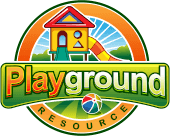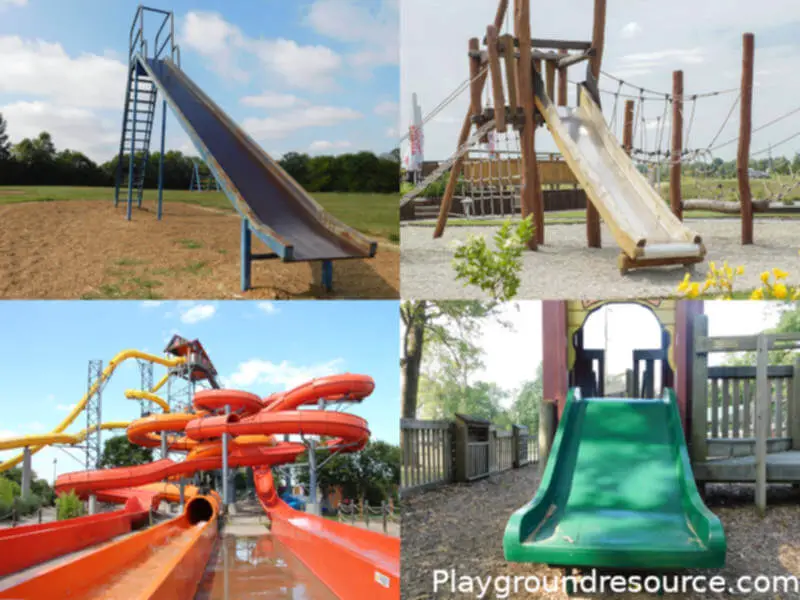
You can find a variety of slides in playgrounds, parks, and residences. This playground equipment has become even more popular because of multiple benefits which include the promotion of balance and coordination, development of positive social skills, and the wholesome physical challenges it presents for children.
These slides come in various colors and shapes and are made of different materials.
In this article I’ll cover each material, explaining the different “types” of material used and also cover the material used to make DIY slides.
Table of Contents
What Are Playground Slides Made of?
Plastic, metals, fiberglass, and wood (usually covered in a slippery plastic sheet) are commonly used to make commercial and residential playground slides. Other materials used for constructing a slide -most commonly a DIY slide- are PVC pipes, plastic culverts or large drain piping, and sheet metal.
What Plastic Slides Are Made of?
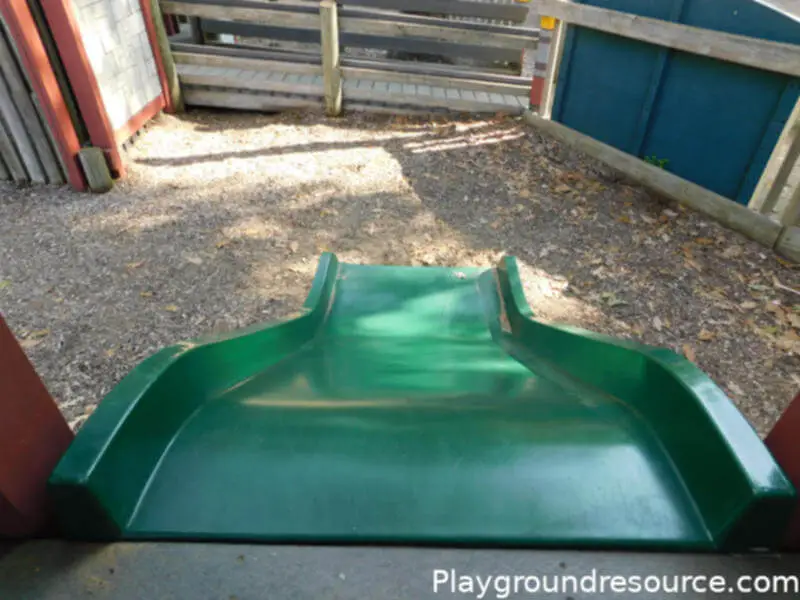
Plastic slides are most commonly used for playgrounds nowadays versus slides made of metal.
The primary reasons are that plastic is lighter, more cost-effective and can be just as durable as metal. Also, the surface of plastic does not get as hot as metal slides during the summer season, helping to prevent heat-related injuries
The most common variety of plastic used to make playground slides is called HDPE or high-density polyethylene. HDPE provides hassle-free maintenance, high durability, safety, and affordability. This material is also environmentally sustainable which produces a positive effect on our planet.
HDPE plastic is also used to make many other products we use everyday such as :
- Milk bottles
- Industrial plastic pipes made for fluid and even gas transfer
- Shampoo bottles
- Cutting boards
Another plastic used for making playground slides is LDPE or low-density polyethylene.
LDPE plastic is also used to make :
- Plastic shopping bags (grocery bags)
- Water bottles
- Food storage containers
Both HDPE and LDPE plastics are made from the polymer polyethylene, but the HDPE plastic is harder and more durable.
The form of most modern plastic slides is a result of a process called rotationally molded plastic– or rotomolding.
Anti-static inhibitors and stabilizers make for a smooth sliding experience. The plastics are also UV-stabilized to minimize fading.
What Metal Slides Are Made of?
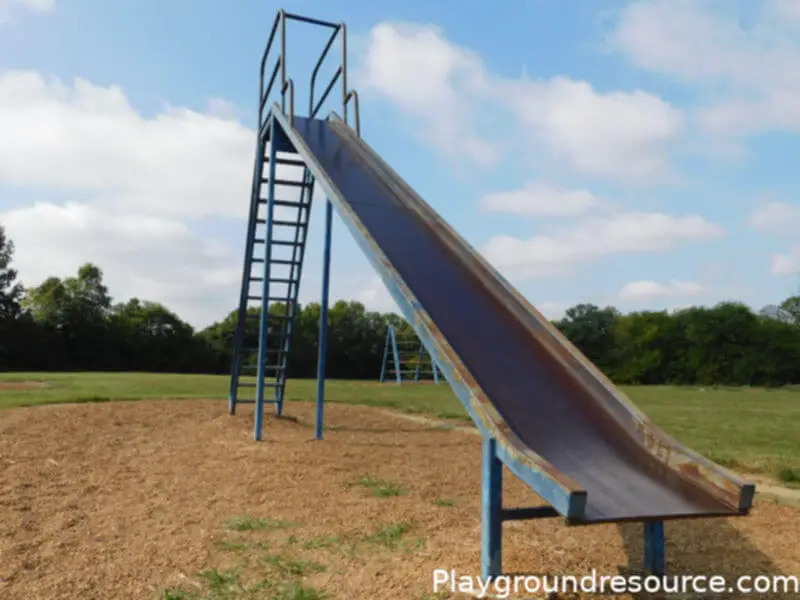
Metal slides are fabricated from stainless steel, hot-dip galvanized steel and painted or anodized aluminum. These steel components have been treated either with epoxy resin and powdered paint.
Sandblasted or abrasive blasting makes the metal surface smooth. Metal slides are weather-resistant with a shiny finished look.
Galvanized steel is often used for the posts and tubes to support the slide making it very durable.
What Fiberglass Slides Are Made of?
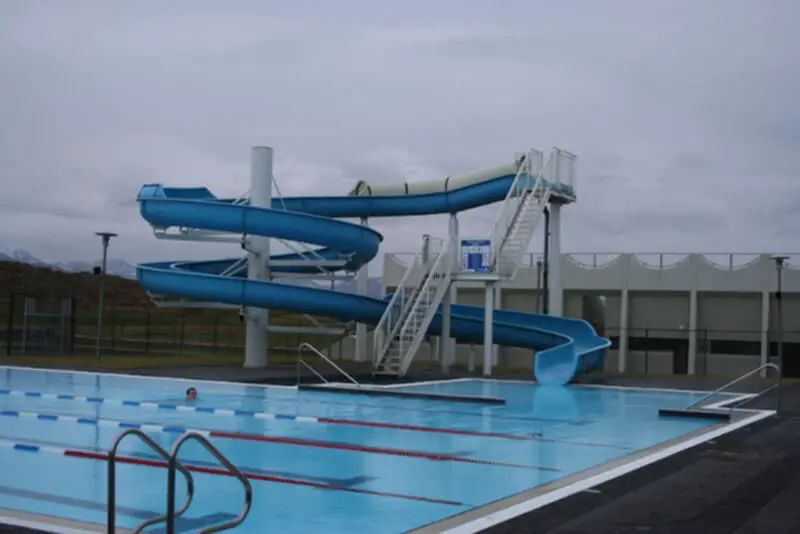
Fiberglass slides or wet water slides are usually for swimming pools and water parks. Fiberglass material is more resilient compared to sheet metal. It is also exceptionally durable.
Fiberglass has fire-retardant resins so the material stands out against fires. It will get scorched but not burned out. This material also resists corrosive chemicals and tolerates any kind of rough handling.
What Wooden Slides are Made of?
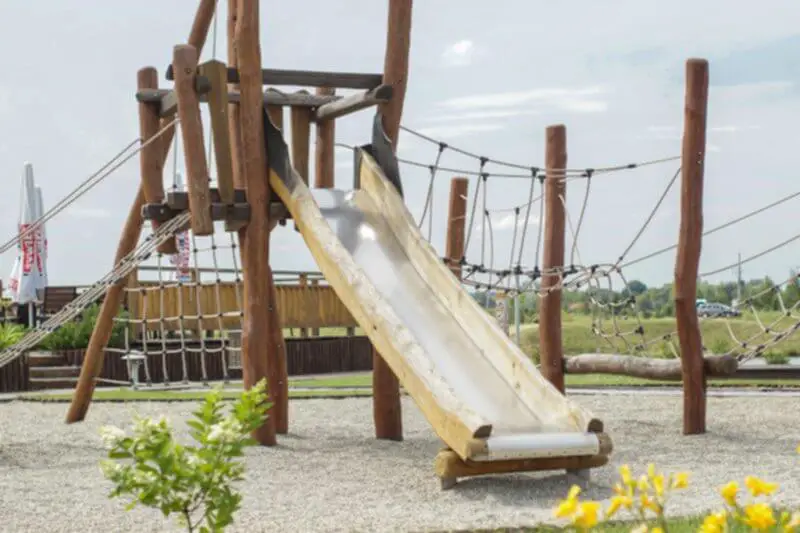
Some of the first slides ever made for recreational play were made from wood. And today in modern times, this material is making a comeback. Even though rare, you can find wooden slides available on the market.
The wood is sanded to a very smooth, fine finish then treated with a sealant.
Modern wood slides often have a thin, slippery piece of plastic that covers the slide surface, making it much safer and conducive to sliding. Sheet metal is also a material used to cover the slide surface (as seen in the photo above).
Different Kinds of Playground Slides
These are the most common types of playground slides.
Spiral

This slide goes down in a spiral allowing children to experience a new sliding experience- twisting down.
Tube
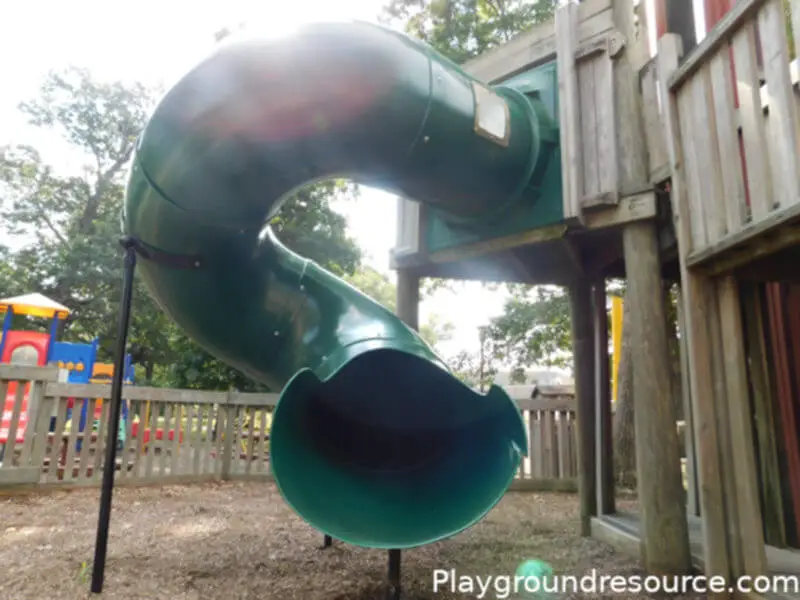
The tube playground slide is an enclosed slide with or without curves. It maximizes the kids’ fun and excitement giving them the feeling of going through a tunnel.
Side-by-Side
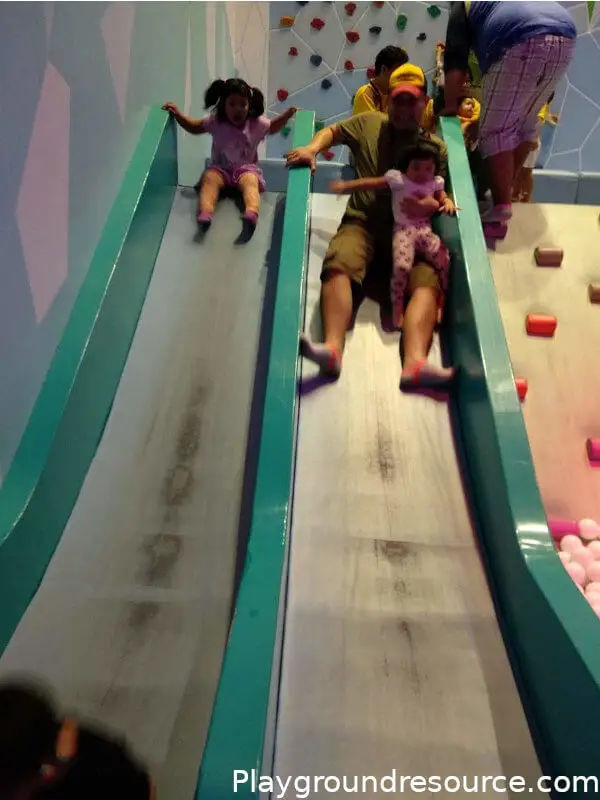
A slide with two or more slides side-by-side. Most often seen in public parks and indoor playgrounds. Great for groups of kids as they can race each other to the bottom safely.
Wavey
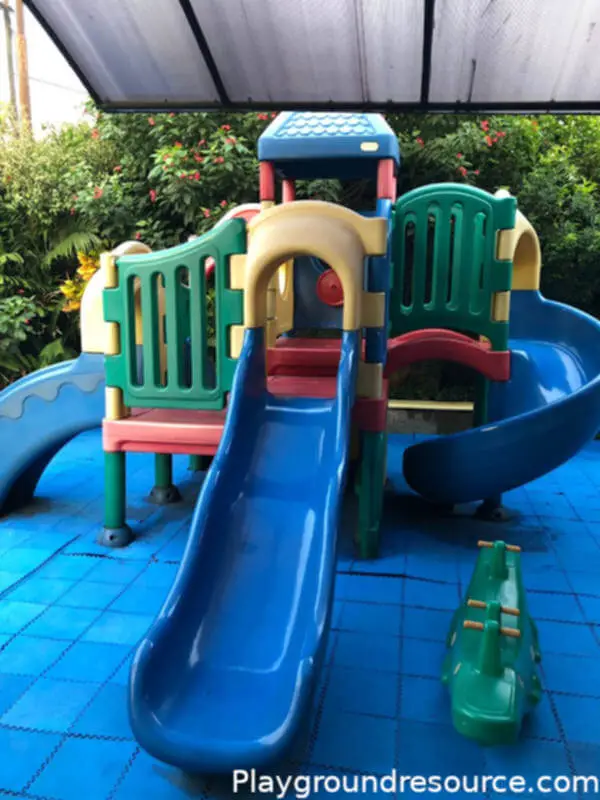
The wavy playground slide has “waves” on the sliding surface which provide a fun, new experience when sliding and also helps to regulate speed.
Right/Left Turn
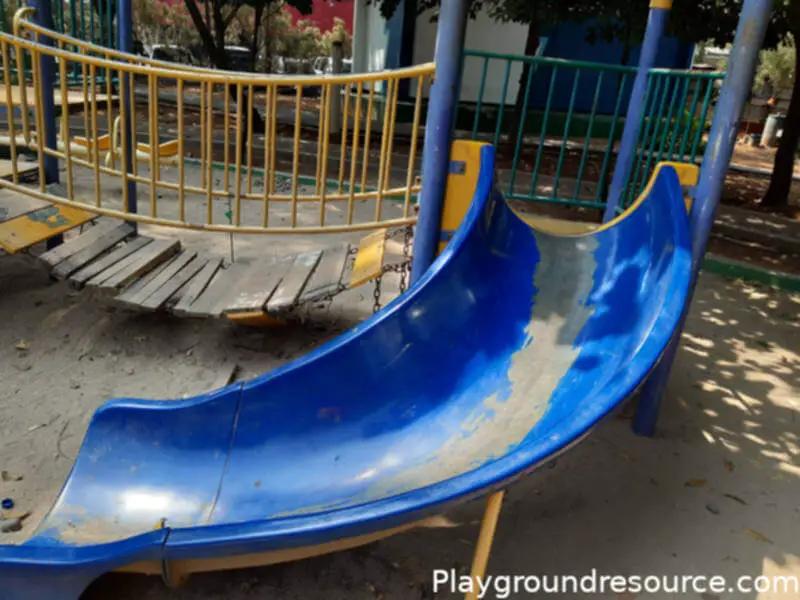
Right/Left Turn Slide – This slide ends in a left or right curve.
Bumpy/Climber
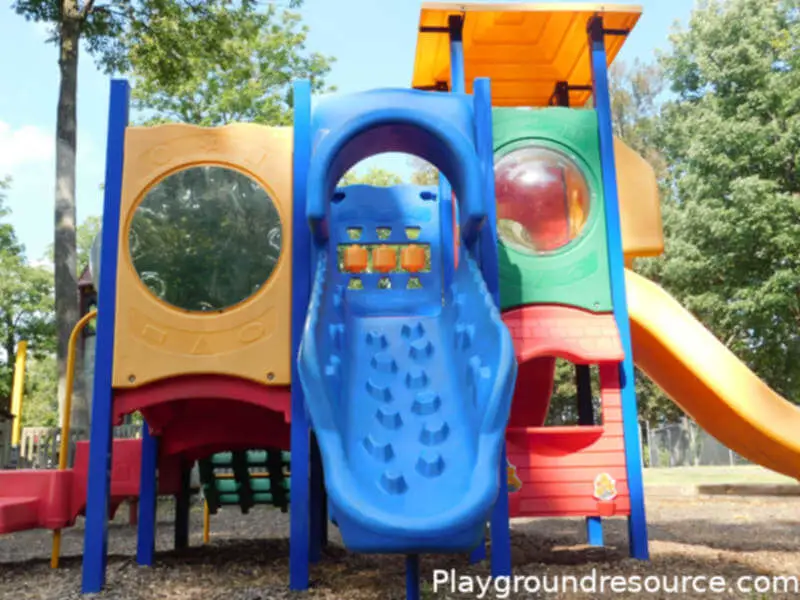
A slide that you can go down then climb back up safely.
DIY Playground Slides
You need not go out and purchase an expensive slide for your family. In fact, you can build a slide for the kids right in your own backyard.
All you need are simple tools and materials from your local hardware store. Here I will list the most common DIY slides and the types of materials used.
Rolling Pipe Slide
Parents can opt for the DIY rolling pipe slide for their children. This slide may be built by using PVC pipes and lumber. Using a base made of wood, you can connect the slide to a swing set (if you have one in your backyard) or fabricated as a stand-alone structure. Here’s a video that explains the building process.
Sheet Metal Slide
The sheet metal slide is another DIY playground slide. One outstanding property is its pliability. Sheet metal is just as good as plastic if installed and maintained correctly. The video below demonstrates one way you can build one yourself.
Keep in mind that you can also put sheet metal over almost any surface. So if you already have a frame of some kind, you can attach a sheet metal surface to turn it into a slide.
Plastic Culvert Slide
This material may be used in making a tube or open (regular) slide. Instead of buying commercial plastic, you can look for a more economical culvert sewer or drainage pipe.
This is usually sold in 10 to 20-foot lengths and safe because it is fully enclosed. However, you need hardware capable of supporting the drainage pipe and the weight of the children.
This would be great for yard with a hill or slope. The video below gives you an example of a culvert slide with a “frame”.
Final Thoughts and Considerations
Slides have long been a staple of playgrounds and a favorite of kids and adults alike. They are sold in all shapes, sizes, materials, and colors. The designs get bolder and more sophisticated as time progresses. But one thing will always remain the same- a playground is always more fun with a slide.
I hope this article has been helpful in giving you some insight into the different materials used to make them. Remember to be safe and have fun!

